back-to-the-city movement
description: the migration of people from suburbs and rural areas back to urban centres
11 results

The New Urban Crisis: How Our Cities Are Increasing Inequality, Deepening Segregation, and Failing the Middle Class?and What We Can Do About It
by
Richard Florida
Published 9 May 2016
“On the other hand, when a very few and highly selected whites buck the trend and stake a claim in the city, they are berated as opportunists and decried for gentrifying the inner city.”5 My objective in this chapter is to focus on the facts in order to restore some sorely needed balance and perspective to the conversation. As we will see, the pace of gentrification has picked up as the back-to-the-city movement has accelerated since the year 2000. But as of yet, it has mainly affected the rather exclusive club of superstar cities and tech hubs. And though a large body of research finds that relatively few people are directly displaced by gentrification, the bigger problem lies in the way the back-to-the-city movement has driven up urban housing prices in these cities across the board, with the burden falling most heavily on the poor and disadvantaged.
…
This was the kind of neighborhood I had hoped the new creative class was bringing back to our cities. But now, these once sturdy middle-class neighborhoods were disappearing right before my eyes. I entered into a period of rethinking and introspection, of personal and intellectual transformation, of which this book is the result. I began to see the back-to-the-city movement as something that conferred a disproportionate share of its benefits on a small group of places and people. I found myself confronting the dark side of the urban revival I had once championed and celebrated. Our divides were causing greater inequality both within cities and metro areas, and between them.
…
As Easterly’s detailed data on real estate prices show, the past twenty or so years—the period that is commensurate with current gentrification—has seen by far the largest jump in the area’s real estate values. Indeed, gentrification has become a much more contentious issue today than it was in the 1970s and 1980s, as the back-to-the-city movement has accelerated and real estate prices have skyrocketed in superstar cities. Between 1990 and 2014, more than half of America’s one hundred largest cities saw population growth in neighborhoods close to their urban centers. This is a dramatic reversal of previous patterns—by way of comparison, just six of those cities experienced population growth in these same areas between 1970 and 1980.11 This recent re-urbanization trend has been overwhelmingly driven by the upscale, affluent, educated, and white.
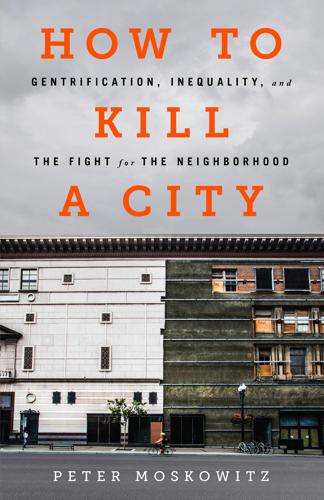
How to Kill a City: The Real Story of Gentrification
by
Peter Moskowitz
Published 7 Mar 2017
And it doesn’t mean developers are even conscious of the dynamic they’re playing into. But regardless of individual intent, the basic tenet holds true: gentrification works on a mass scale only because most inner cities have been purposely depressed and therefore are now profitable to reinvest in. That led Smith to conclude that “gentrification is a back-to-the-city movement all right, but a back-to-the-city movement by capital rather than people.” Most cities in the US experienced slow bleeds of capital thanks to deindustrialization and white flight, which eventually made their inner cities ripe for gentrification. But New Orleans’s economic devalorization was instant, thanks to Katrina.
…
By funding the construction of roads outside cities: John Hansan, “WPA: The Works Progress Administration,” Social Welfare History Project, Virginia Commonwealth University, 2013, socialwelfare.library.vcu.edu/eras/great-depression/wpa-the-works-progress-administration. Between 1977 and 1984, there were 130 such conversions: Lees, Slater, and Wyly, Gentrification, 29. “gentrification is a back-to-the-city movement”: Smith, New Urban Frontier, 70. “Though the majority of residents may never contemplate”: Quoted in Jason Hackworth, The Neoliberal City: Governance, Ideology, and Development in American Urbanism (Ithaca, NY: Cornell University Press, 2007), 15. “They are the ones that pay a lot of the taxes”: Michael Howard Saul, “Mayor Bloomberg Wants Every Billionaire on Earth to Live in New York City,” Wall Street Journal, September 20, 2013.
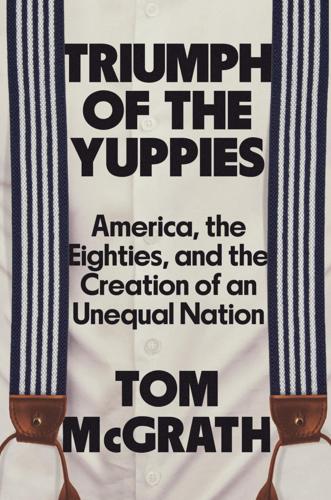
Triumph of the Yuppies: America, the Eighties, and the Creation of an Unequal Nation
by
Tom McGrath
Published 3 Jun 2024
They prized the “original features” unearthed in the homes they were moving into: Hardwood floors. High ceilings. Bare brick walls. Butcher-block countertops. Their parents’ lives were plastic and phony. This group wanted authenticity. By the late ’70s, the phenomenon of young professionals situating themselves in cities was widespread enough that it had earned a name: the “Back to the City” movement. Reporters started writing occasional pieces about what was happening—perhaps cities weren’t dead, after all?—and curious academics decided the phenomenon, while still nascent, was worthy of study. In 1977, the Parkman Center for Urban Affairs in Boston hosted a conference that brought policy wonks together with a group of young Boston professionals.
…
Some of this has a ‘boutique’ feel to it; but much of it is possessed of natural vigor that arises out of youth, optimism, and some meditation upon the issues of culture and one’s place in the world.” For a certain type of educated person it was, no doubt, an inviting atmosphere. Then again, if the original appeal of the Back to the City movement had been the rich mix of people and experiences one found in urban settings, that was less and less the case. How well all these young professionals blended with any old-timers who remained in the neighborhood varied from person to person and place to place. In some cases, there was friction.
…
But there was a growing recognition among marketers that not all Baby Boomers—not all members of the Pepsi Generation—were created equal when it came to purchasing power. Not only did college-educated young professionals have more disposable income than their less affluent peers, but they also—as the organizers of the conference on the Back to the City movement had noted in 1977—had influence. Their habits and tastes became, over time, the habits and tastes of the mainstream. “They are the biggest single factor in anyone’s marketing calculation,” ad exec Jerry Della Femina said of affluent Boomers in 1981. “They are the people who make or break products.”
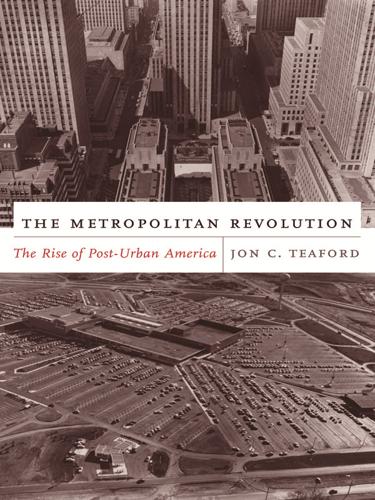
The Metropolitan Revolution: The Rise of Post-Urban America
by
Jon C. Teaford
Published 1 Jan 2006
And their businesses, jobs, and favorite stores were not in the central city. What happened in central-city government or schools did not personally affect them. The middle-class Americans who chose to avoid the suburban lifestyle and live in the central city were most often those least dependent on central-city government services. The back-to-the-city movement appealed to childless young professionals who did not suffer personally from the poor quality of inner-city public schools. Central cities attracted these young adults as well as gays and others who did not want to share the American “norm” along the suburban fringe. In other words, by the close of the twentieth century, American metropolitan areas had become spatially and culturally fragmented, with enclaves for the middle-class nuclear family of father, mother, and two children; with special communities for senior citizens, where those over sixty could be isolated from the more youthful; with gentrifying communities for young singles and gays; and with incipient hubs of gentrification inhabited by artists and others who liked to deem themselves bohemian.
…
Metropolitan areas offered a variety of lifestyle entrées to suit the tastes and predilections of a broad range of Americans. Some were following Mary Richards, taking the centripetal journey to the historic hub; more were trying to make it along the fringe. By the late 1980s, metropolitan America offered it all. Back to the City Underlying the new optimism about the urban core was a much publicized back-to-the-city movement. After decades of outward migration to suburbia, the white middle class seemed to be headed back to the old neighborhoods, where they were investing in real estate and renovating aging structures that until recently appeared destined for abandonment. This return of the white middle class became know as gentrification; the gentry were reclaiming down-at-the-heels neighborhoods and making them upscale.
…
Meanwhile, the remaining working-class residents in those neighborhoods watched their property taxes rise, taxes that went to pay for subsidized marketplaces and rehabilitation schemes. Throughout the half century after World War II, mayors and urban business leaders sought to draw middle-class money to the core. The back-to-the-city movement was just one more stage in that effort. Working-class city dwellers might benefit from the restaurant jobs created in revitalized neighborhoods, but back-to-the-city initiatives were aimed preeminently at accommodating the middle class and its money. The Making of Gay Ghettos One group that was establishing its own niche in the American metropolis of the 1970s and the 1980s was the gays.
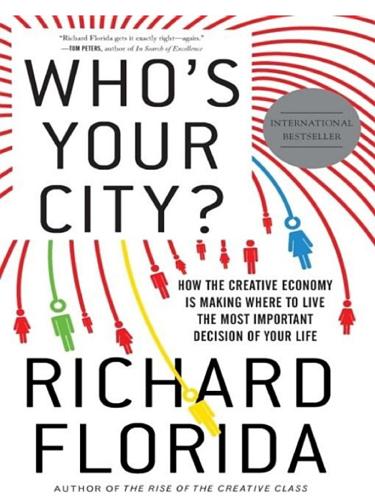
Who's Your City?: How the Creative Economy Is Making Where to Live the Most Important Decision of Your Life
by
Richard Florida
Published 28 Jun 2009
Populations have also shifted from the older, colder, urban centers to warmer, sunnier regions. And finally, there is the continued outward movement to the exurbs and edge cities, which are organized around highway interchanges, business parks, and shopping malls.4 But confounding this trend is the worldwide urban shift as well as a significant back-to-the-city movement. A powerful wave of gentrification has swept urban areas, bringing loft housing, condo conversions, historic preservation, new restaurants, retail outlets, and nightlife back to city neighborhoods. Some even predict that this trend may soon recede, as housing becomes less affordable for the very groups that powered the gentrification in the first place.
…
Where boomers flock, bargains disappear, and the neighborhood butcher shop is replaced by a pan-Asian fusion restaurant and a hardware store gives way to a high-end remodeling center. Authenticity quickly acquires a sheen of self-consciousness that, to some, connotes its opposite. Those who lived in these places before feel as if they have been invaded by an alien culture, even while some of them make a mint from selling their homes. The recent back-to-the-city movement among boomers has already changed the dynamics of entire communities, making it nearly impossible for subsequent generations to buy in, pushing them to fringe districts or out to the suburbs. Sometimes, if I ask just the right way, my students and the younger members of my research team will tell me how they resent what boomers have done, not just by foisting “their music” on them, but by taking over whole parts of cities and pricing them out.
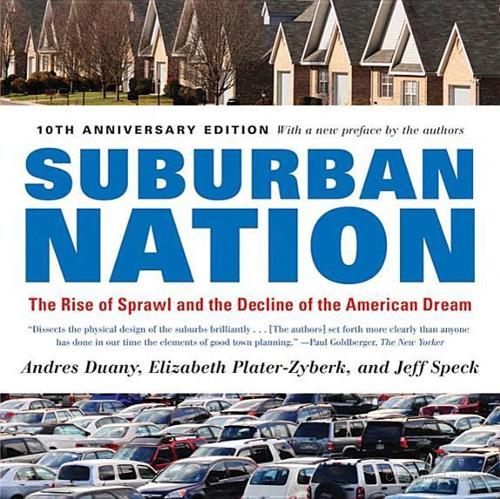
Suburban Nation
by
Andres Duany
,
Elizabeth Plater-Zyberk
and
Jeff Speck
Published 14 Sep 2010
David Petersen of Price Waterhouse has gone one step further and demonstrated that a sustainable urban area requires a critical mass of residential, shopping, and entertainment uses within one mile of the downtown (David Petersen, “Smart Growth for Center Cities,” 51). bv This may not last, as a nascent back-to-the-city movement could soon give Houston a downtown that can compete against its fabled Galleria. Interestingly, unlike in most East Coast cities, in Houston the urban settlers are less brash pioneers than disgruntled suburbanites who have given up on a failed freeway system. The recent huge investment in downtown housing should improve this situation quickly.
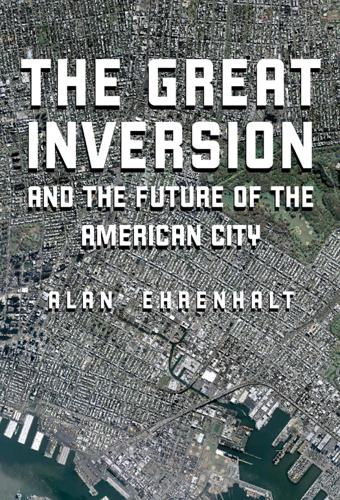
The Great Inversion and the Future of the American City
by
Alan Ehrenhalt
Published 23 Apr 2012
Most of the major demographic trends right now in America work in favor of an urban preference, at least among a significant cohort of the emerging adult population: smaller households, later marriages, decisions not to marry at all, decisions not to have children, the emergence of a huge and active baby boom population in its sixties and seventies—all point to some form of reemergence of urban choice. But suppose one grants many of the predictions made by those who attempt to debunk any significant back-to-the-city movement among the millennial generation. The generation is simply so large—by one conventional measure, sixty to seventy million people—that even a respectable minority of this cohort seeking an urban life is bound to change American metropolitan areas dramatically. In a poll cited by The New York Times in 2009, 45 percent of Americans between the ages of twenty and thirty-five said they would like to live in New York City someday if they could.

The New Class Conflict
by
Joel Kotkin
Published 31 Aug 2014
This reflects market forces, but also the attempts by the Clerisy and urban developers to concentrate people and companies within the centers of core cities, an idea that gained momentum in the 1970s as part of the environmental movement’s anti-sprawl campaigns. This approach is widely cheered by commentators on both the right and the left. “The new American dream is a condo in the city,” argues Fox News commentator Kate Rogers in a very typical media statement.6 The “back to the city” movement increasingly relies on a new model of urbanism that is less about creating opportunity for the aspirational class and more about offering what former New York Mayor Michael Bloomberg calls “a luxury product,” a place that focuses on the very wealthy.7 This approach has a simple economic formula: if you please and lure the ultra-rich, you can serve the rest of the population from their surplus.
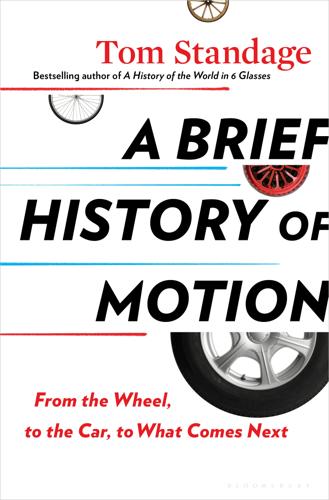
A Brief History of Motion: From the Wheel, to the Car, to What Comes Next
by
Tom Standage
Published 16 Aug 2021
See autonomous vehicles (AVs) Serpollet steam engines, here, here shared space street design, here shopping malls proliferation of, here, here as re-creation of town square, here, here replacement by online shopping, here silent policemen, here Sloan, Alfred P., here, here, here smartphones and Chinese influence, here and distracted driving, here and ease of using public transportation, here and mobility as a service (MaaS), here, here and modern alternatives to car ownership, here and new online culture, here replacement of cars as status symbols, here and ride-sharing/hailing, here, here, here and shopping and socializing without cars, here, here stagecoaches cost of travel by, here, here introduction of, here replacement by railroads, here speed increases of early 19th century, here Standard Oil Trust, here, here, here, here steam engine, development of, here steam-powered vehicles advantages and disadvantages of, here early examples of, here, here, here in Paris–Bordeaux race (1895), here, here in Paris–Rouen race (1894), here, here, here, here reasons for lack of success, here sales in late 19th and early 20th centuries, here streetcars electric, introduction of, here replacement by buses, here, here suburban commuters cross-suburb commuters, here increasing lengths of commute, here in pre-car days, here subsidized public transportation for, here, here suburbs American-style, global imitation of, here and “back to the city” movement, here and cars, reliance on, here, here and discriminatory loan practices, here expansion with improved transportation, here high carbon footprint of, here as less prevalent in Europe, here Levittown, here models for design of, here, here, here move of stores and businesses to, here ongoing growth of, here and pedestrian-involved accidents, here percentage of Americans living in, here popularity of, here positive and negative views of, here postwar housing boom in, here redesign efforts, here white migration to, here zoning laws in, here supermarkets, as product of car culture, here tax law and ethanol fuels, here, here and shopping mall boom, here, here Taylor, John, here, here teenagers car culture and, here emergence as distinctive group, here Tesla Motors founding and growth, here and materials needed for electric cars, here and self-driving cars, here, here, here Thrun, Sebastian, here, here, here touring cars, here traffic congestion autonomous vehicles and, here, here, here highways as remedy for, here, here, here horse-drawn vehicles and, here inadequacy of public transport and, here ride-hailing/sharing and, here, here, here and rising commute times, here turn from horses to cars and, here, here, here, here use of fees to reduce, here, here traffic laws and rules cities with alternative anti-car rules, here early definition in Europe, here, here early definition in U.S., here, here, here, here effect on traffic fatalities, here international standards, development of, here speed limits, early opposition to, here, here See also traffic lights; traffic signs traffic lights addition of yellow light to, here development of, here railroad signals as model for, here removal of, in shared space planning, here traffic signs early lack of consistency in, here first use of, here Milwaukee mushrooms, here removal of, in shared space planning, here silent policemen, here stop sign shape, standardization of, here transport-aggregator apps, here transportation, future of.
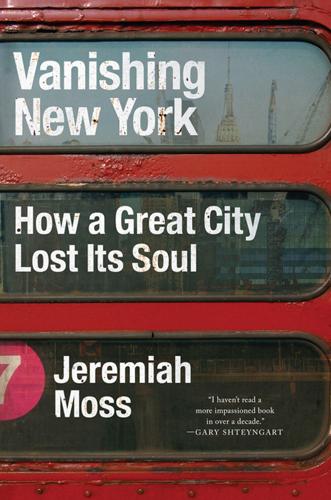
Vanishing New York
by
Jeremiah Moss
Published 19 May 2017
While gentrification was causing a stir in the 1970s, it was nothing compared to what was coming down the pike. The influx of yuppies was still offset by white flight to the suburbs, and they were hardly stampeding to the city as they are today. A quarterly bulletin by the Federal Reserve Bank of New York titled “Are the Gentry Returning?” found little evidence to support the idea that the back-to-the-city movement had begun in earnest. They concluded, “The overall attractiveness of New York City to the ‘gentry’ . . did not grow between 1970 and 1980.” In fact, the city’s share of high-income households, college graduates, and other high-status groups dropped. This vision of gentrification is still the one many of us think about when we think about gentrification—episodic and gradual, organic and minimally harmful, with some positive effects like fresh produce at the corner grocer and safer streets.
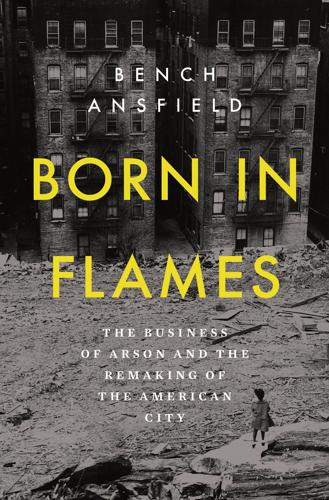
Born in Flames
by
Bench Ansfield
Published 15 Aug 2025
In a paradigm-shifting 1979 essay, Smith defined the rent gap as “the disparity between the potential ground rent level and the actual ground rent capitalized under present land use” (545). “Once the rent gap is wide enough,” he argued, “gentrification may be initiated.” Neil Smith, “Toward a Theory of Gentrification: A Back to the City Movement by Capital, Not People,” Journal of the American Planning Association 45, no. 4 (1979): 538–48. 25Deborah Stone, “Beyond Moral Hazard: Insurance as Moral Opportunity,” in Embracing Risk: The Changing Culture of Insurance and Responsibility, ed. Tom Baker and Jonathan Simon (Chicago: University of Chicago Press, 2002), 52–79; John D.